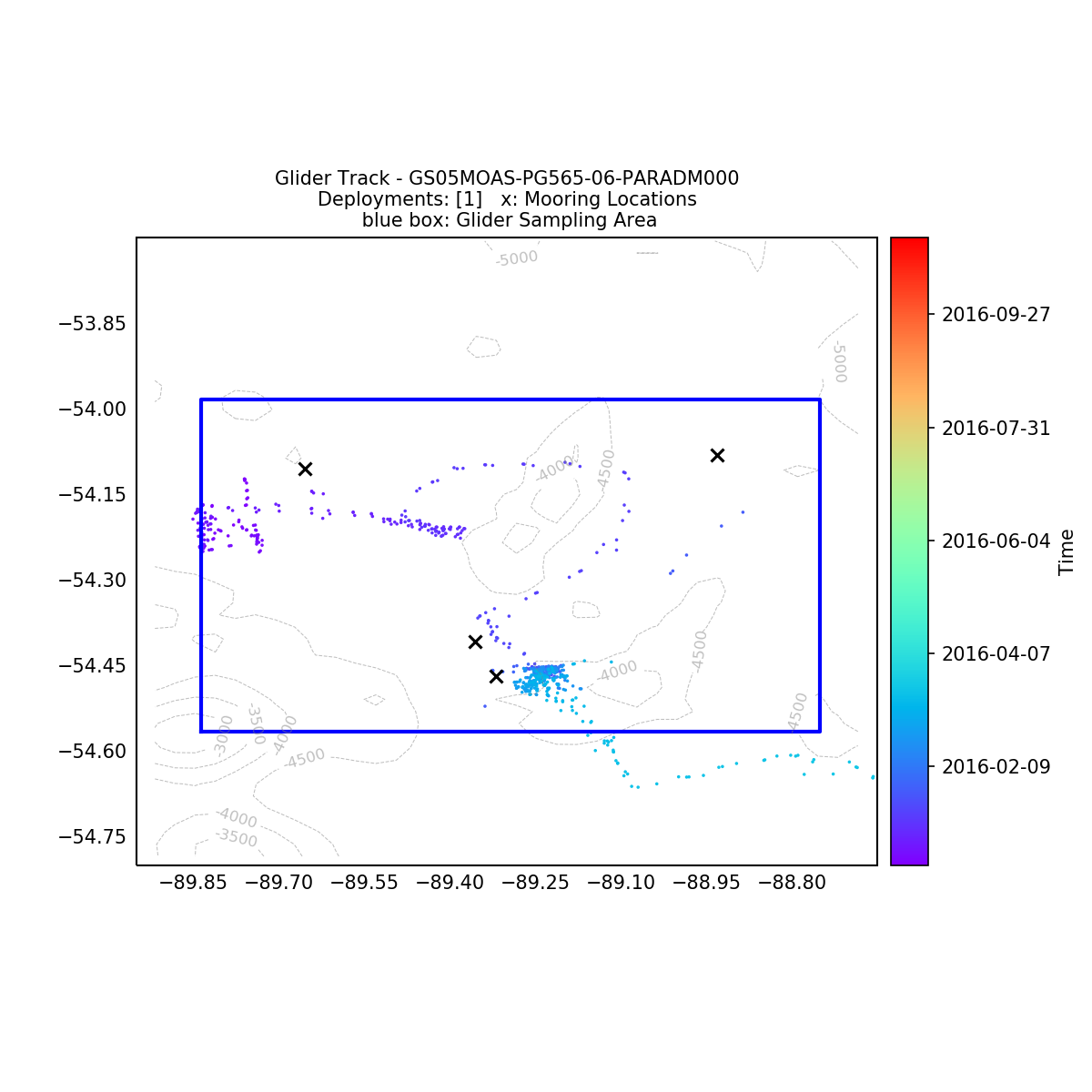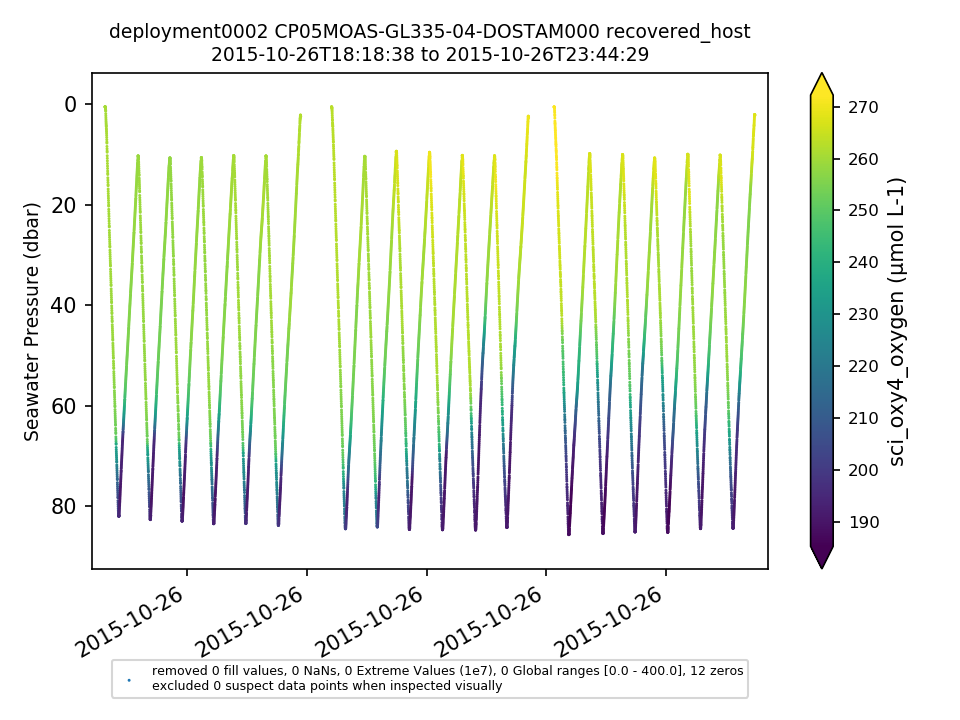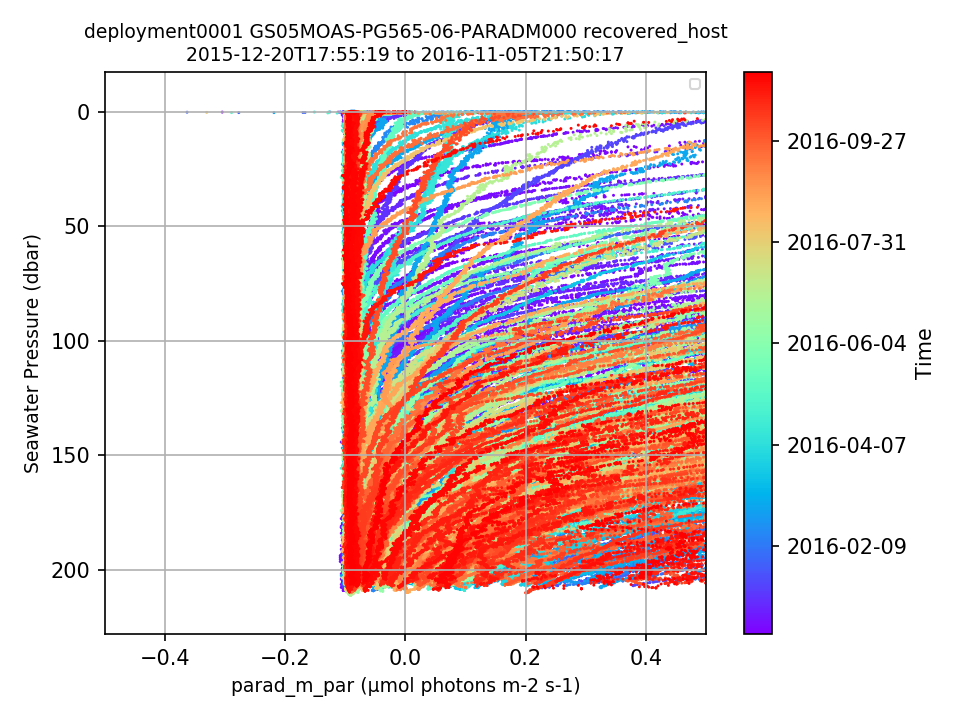Photosynthetically Available Radiation
- Reference Designator
- GS05MOAS-PG565-06-PARADM000
- Review Status
- Review Complete
- Note
- Depth
- 0 to 200m
- Class
- PARAD (Photosynthetically Available Radiation)
- Make / Model
- Biospherical Instruments / QSP-2155
Dataset Reviews Last processed: 1/28/20, 7:21 PM
| Dep. | Preferred Method | Stream | DD | FD | SG | EG | Gaps | GD | TS | Rate (s) | Pressure Comp. | Time Order | Valid Data | Missing Data | Data Comp. | Missing Coords. | Review |
|---|---|---|---|---|---|---|---|---|---|---|---|---|---|---|---|---|---|
| 1 | recovered_host | 338 | 315 | 0 | 15 | 4 | 7 | 1,674,497 | 1 | 200 / 211 | Complete |
Test Notes
All good!
Data Coverage
| Deployment: | 1 |
|---|---|
| 93% |
Deployment Map

System Annotations Show
| Metadata | Start Date | End Date | Comment |
|---|---|---|---|
|
GS05MOAS-PG565 |
12/20/15, 12:56 PM | 11/5/16, 9:02 PM |
Deployment 1: Deployed on 12/20/2015, recovered on 12/25/2015 20:40 UTC for ballast correction and was re-deployed. Starting around 5/1/2016, glider became increasingly difficult to steer. Glider stopped profiling on 11/6/2016 to conserve remaining battery power. At recovery, barnacles were present mostly on the underside of the glider, and were not in an area to hinder flight performance. Id: 577 By: lgarzio |
Review Notes
| Metadata | Start Date | End Date | Comment |
|---|---|---|---|
|
GS05MOAS |
Glider optodes typically exhibit a sensor lag of 20-25 seconds. Example attached of several segments with consecutive down and up casts for CP05MOAS-GL335-04-DOSTAM000 on 10/26/2015 showing a typical measurement time lag. Profiles should be analyzed for individual time lags and data should be adjusted. OOI doesn't necessarily need to make the adjustment but users should be aware of the issue. By Lori Garzio, on 5/31/19 |
||
|
GS05MOAS-PG565-06-PARADM000 |
99% of the sci_bsipar_par values for this deployment are outside of global ranges. sci_bsipar_par is the unscaled L0 PAR data product. The global ranges for this parameter are the same as for the scaled L1 PAR data product [0.0, 2500.0]. The global range for sci_bsipar_par should be reviewed. By Lori Garzio, on 1/30/20 |
||
|
GS05MOAS-PG565-06-PARADM000 |

